- Home
- Nathaniel Hawthorne
Selected Tales and Sketches Page 4
Selected Tales and Sketches Read online
Page 4
Much of the worldly “intercourse” opened up by the Twice-told Tales requires no arcane research to discover. The signature of that work identified Hawthorne, as an author, to the notably intellectual Peabody sisters of Salem. To the least assertive of these sisters, Sophia, Hawthorne soon became engaged, even as the far more aggressive Elizabeth was working to advance his (perilous) claim to political patronage from the Jacksonian Democratic Party. Though the years 1839 and 1840 seem most clearly marked by the outpouring of love letters Hawthorne wrote to his fiancée while he held the uncongenial post of Customs Inspector for the Port of Boston, it is worth remembering that the first of Hawthorne’s extended works for children were also written at just this time; and that The Whole History of Grandfather’s Chair (as this three-part history of Massachusetts was later to be entitled) offers a useful hint about the world Hawthorne had entered. Though the matter of the Puritans and of the Revolution was familiar and even backward-looking, the purpose was new, as Hawthorne clearly thought of his subtle but largely unironic re-retelling as a contribution to the reform of education, itself part of a larger “ferment” of protest which has seemed to define American social history in the 1840s. Evidently Hawthorne agreed with Horace Mann, the reformer about to marry yet another of the Peabody sisters, that it matters very much what children are given to read.
Other recognitions and agreements might not come so easily in Hawthorne’s new environment. Boston, including its intellectual suburbs of Unitarian Cambridge and Transcendental Concord, was a vastly wider, more vibrant and fluid world than Salem had ever been. Having invested many of his summers traveling around New England, and having pressed one of his tours as far as Detroit, Hawthorne was of course no Robin Molineux; he had even spent six months in 1836 in New England’s “metropolis,” editing the American Magazine of Useful and Entertaining Knowledge. Such experiences could hardly fail to widen one’s horizon. But this was different. For Hawthorne was now, in fact if not by personal preference, a part of the political machine; like it or not, he had to socialize with Bancroft. And though he tried to stand aside from the current of transcendental Lectures and feminist Conversations, his new relations inevitably drew him in: Sophia was herself an ardent enthusiast of Emersonian idealism; and Elizabeth Peabody, who had been secretary to William Ellery Channing (Emerson’s Unitarian “bishop”) and then assistant at the notoriously experimental school of Bronson Alcott (Emerson’s Platonic “saint”), seemed to be at the center of everything connected with what people fell into calling “the Newness.” She even wrote some of the public relations material for Brook Farm, George Ripley’s transcendental commune at Roxbury, which she liked to describe as “Christ’s idea of society. ”
Abruptly enough, therefore, a studious, somewhat reclusive, and intensely shy young man and writer—younger in social experience than his thirty-five years—was set down in close proximity to the center of a self-conscious “Renaissance,” to which he would soon begin to make his own considerable contribution, but which was begun well before he arrived and would have been, even without his participation, one of the most significant intellectual and social awakenings in American history. Sooner or later our “moral historian” would have to estimate the mentality of his own generation of Transcendental Seekers, most of whom seemed more than a little puritanic still.
Yet it seems equally predictable that the public response did not come at once: over seventy tales and sketches had got themselves published by January 1839, but the new flood (of almost two dozen) does not begin until the middle of 1842. No doubt the unaccustomed routine of a Custom House was part of the reason for this long hiatus. So too the burden of physical labor Hawthorne exuberantly undertook when, unlike Emerson, he made himself a charter member of Brook Farm, in April 1841. Possibly sharing Ripley’s enthusiastic desire “to insure a more natural union between intellectual and manual labor than now exists,” and certainly trying to establish a style of life that would permit an ill-paid author to support a wife, Hawthorne was nevertheless reporting by June that “this present life gives me an antipathy to pen and ink, even more than my Custom House experience did.” And though he continued in residence through the end of the year, his decision to leave is perfectly forecast in his observation that “a man’s soul may be buried and perish under a dungheap ... as well as under a pile of money.” Equally relevant, however, is the available inference that it took Hawthorne a while to isolate his new center of thematic interest, that he in fact required the intellectual experience of Brook Farm to discover it.
Such is certainly the impression left by The Blithedale Romance, the most obvious and direct literary outcome of Hawthorne’s encounter with “the community” of Brook Farm. Though most criticism now rightly treats Miles Coverdale (the narrator of that later work) as an altogether ironic version of Hawthorne himself, it remains true that Coverdale redundantly speaks the sentiments of Hawthorne’s letters and notebooks from this period. And a significant stretch of intellectual biography seems plainly announced by Coverdale’s account of his initiation into the rhetoric of Newness:
I read interminably in Mr. Emerson’s Essays, the Dial, Carlyle’s works, George Sand’s romances, ... and other books which one or another of the brethren or sisterhood had brought with them. Agreeing in little else, most of these utterances were like the cry of some solitary sentinel, whose station was on the outposts of the advance-guard of human progression.... They were well adapted ... to pilgrims like ourselves, whose present bivouac was considerably farther into the waste of chaos than any mortal army of crusaders had ever marched before.
Not that the stay at Brook Farm absolutely originated Hawthorne’s experience of Emerson and his contemporaries, or that this brief list at all exhausts the extent of his eventual familiarity. Yet some deep structure of personal revelation seems abundantly clear: metaphorically, at least, it was indeed “but well to be on friendly terms with all the inmates of the place one lodges in.” And further, if more literally, we should be surprised if Hawthorne did not learn, from Ripley and others, the significant moral and literary history of their decision to begin human life anew.
Once again, however, it is the allusive texture of the tales themselves which best indicates Hawthorne’s newly updated thematic interest. Most challenging is the case of “Rappaccini’s Daughter” (1844), which demands structural comparison with “Young Goodman Brown” (published just ahead of it in the Mosses) and yet insists on its own separate context and application. Its whimsical “Aubépine” introduction makes an only faintly disguised reference to Ripley’s aggressively transcendental Specimens of Modern Standard Literature (1838), just before lamenting that, under one name or another, “the Transcendentalists have their share in all the current literature in the world.” More internally still, the tale which follows—a painful faith-test for an elaborately misprepared Giovanni Guasconti—deploys Ripley’s own logic of faith and evidence, in the very late-Renaissance world where modern skepticism and fideism were certifiably twin-born. The full import of the Paduan setting has required a rare mix of scholarly patience and readerly acumen fully to reconstruct; but the narrator’s tendentious emphasis on Giovanni’s failure to regard his intuitive “better evidence” plainly recalls the public battle over “miracles” which all the best and brightest young Transcendentalists had recently waged against the empiricism of their Unitarian mentors at Harvard.
Yet Ripley was scarcely the master spirit of America’s Transcendental age, as most observers could recognize even then. It was, after all, Emerson who had delivered “The American Scholar” as Harvard’s Phi Beta Kappa Address in 1837; and of course it was Emerson whom the divinity students asked to preach their graduation address in 1838. The studied but also uneasy ambivalences of that latter performance must certainly lie behind the problem which a “Giant Transcendentalist” creates for the latter-day pilgrims of Hawthorne’s “Celestial Rail-road” (1843): they hardly know “whether to be encouraged or affrighted” by the wond
rous mixture of ideal affirmation and historic denial. More centrally still, the insistent allusions of “The Hall of Fantasy” (1843) appear to identify the Emersonian philosophy as the most radical “apocalypse” of them all: the biblical speculations of a certain “Father Miller” may predict the immanent foreclosing of mankind’s earthly career, but elsewhere—in Emerson’s Nature (1836), for example—“the Idea” has already been declared to be “all in all.” Emerson outgrew the arrogance, if not the idealism, of his early speculations, as every reader of his essay “Experience” (1844) is well aware. Still, Hawthorne’s “Christmas Banquet” (1844) exists to notice that the psychological consequences of worldly denial are not so easy to unsay, as the puritanic self-absorption of “Egotism; or the Bosom Serpent” (1843) lapses to a positively schizophrenic sense of universal unreality. Possibly Emerson’s philosophic cure was somehow worse than its correlative disease; perhaps a guilty identity was better than none.
For a more literal treatment of Emerson, the reader will have to turn (elsewhere) to “The Old Manse” (1846), a lengthy and revealing piece of fictionalized autobiography Hawthorne wrote to summarize his entire experience of Transcendental Concord, and to introduce the Mosses. Compressing several years of life into a single turning of the seasons, Hawthorne lovingly evokes the house and grounds, and also the historic associations, of the parsonage or “manse” to which he moved in the summer of 1842, just after his long delayed marriage to Sophia Peabody; and biographers have always used this work—along with another, less overtly personal sketch entitled “The New Adam and Eve” (1843)—to celebrate the bliss of Hawthorne’s wedded life, and to elaborate his profound commitment to conservative values. Of equal significance is Hawthorne’s strategic placement of himself, in the midst of a remarkable literary society that included, among many others, Bronson Alcott, Ellery Channing (the younger), and Henry David Thoreau, all swirling around the “great original thinker, who had his earthly abode at the opposite extremity of our village.”
The formulation is literally accurate, as any visitor to present-day Concord may pleasantly discover. And it leads on to the personal confession that, “being happy,” Hawthorne felt no need just then to ask “of this prophet the word that should solve ... the riddle of the universe.” Also suggested, however, is Hawthorne’s own sense of his relation to Emerson and his various Transcendental disciples: he is among them, quite clearly, as Concord is but a village; and friendly, to the appearances of outward sociability; sharing, as F. O. Matthiessen well observed, a common aspiration for the democracy of American life and letters; yet he is opposite their metaphysical interest in a way he trusted only his fictions to express.
Most noticeably, perhaps, Hawthorne continued to uphold his classic principle that literature is a shared experience rather than a private or purely subjective concern. Utterly skeptical about the discoverability, perhaps even the existence, of some occult entity called “the Self,” Hawthorne explicitly denies that he is “one of those supremely hospitable people who serve up their hearts, delicately fried, with brain sauce, as a tidbit for their beloved public.” In fact, he resisted, as no other writer of his Romantic age, the temptation to make literature out of his own “soul.” Appearing to answer the studied egotism of Walden in advance, “The Old Manse” invites its readers, at last, not to the personal intimacy of confession but to the dramatic interest of some stories, most of which turn out to suggest where the logic of the Newness might lead, if anyone dared follow its lead alone: to the “liberal” escape, in the “Rail-road,” from the sense of sin and suffering; to the “apocalyptic” denial, in the “Hall,” that the facts of life impose any final restraint on the autonomous life of the “fantasy”; and to the “idealist” and rather chilling discovery, in the “Banquet,” that a self without relation is an empty philosophical construct and a deadly human end.
This last theme—of the ineluctable relationality of all personal existence—may fairly be regarded as Hawthorne’s own thematic “bottom line,” everywhere, uniting works from all his later phases with earlier, puritanic manifestations such as “The Man of Adamant” (1837) and even “The Minister’s Black Veil.” Nor is it entirely misguided to regard the sobering tale of “Wakefield” as a sort of once-for-all abstraction of this variously adumbrated but repeatedly recurring psychological insight. Yet it is equally important to recognize that this one master idea lends structure to a significant variety of historical experiences; that in the “Old Manse” period it often mixes with and sometimes yields place to an altogether “timely” consideration only hinted at earlier, in his observations of the deadly hatred which the religious idealism of the Puritans regularly directed at all things merely “natural”; and that in fact some “death by idealism” emerges as the controlling theme of Hawthorne’s anti-transcendental efforts of the 1840s.
The same spirit that unites Emerson with Father Miller—a sort of neopuritanical hatred of the merely existent—appears to motivate the project of radical reform as Hawthorne represents it in “Earth’s Holocaust” (1844). An altogether unstable narrator ends by proposing, conservatively, that the notoriously American effort to purify the world will fail unless the human heart itself should undergo its own prior purgation. But the shape of the drama suggests the more radical possibility that some terrific lust for perfection will remain insatiate as long as any human trace remains; that the enthusiasm which had sponsored, in 1840, an entirely nonspecific “Convention of the Friends of Universal Reform” might be content with nothing less than the burning of the whole earth and all its heart-of-flesh inhabitants. And surely that dire hint is more than confirmed by “The Birth-mark” (1843), where the spiritual aspirations of contemporary “metascience” rise up to a monomania as dangerous to “the world’s body” as the cosmic paranoia of Melville’s Ahab.
Feminist critics may fairly notice that it is a hapless but worshipful wife who is elected to reveal the mark of fleshly imperfection and on whom, accordingly, the maddened Aylmer must perform his insane experiment. Yet as this gesture is itself problematized, it seems fair to suggest that it too is part of Hawthorne’s historical donnée, especially as the tale appears to make more than a glancing reference to the “Ligeia” of Edgar Poe, whose Platonism repeatedly epitomized itself in the “most poetic” theme of the “death of a beautiful woman.” Evidently Hawthorne wished to observe that certain Western, even Christian attitudes toward “Woman” are embedded in the language often used to express “Man‘s” more than Faustian desire for symbolic transcendence. Probably, if the truth were known, Aylmer’s own body, born of woman, bore some small natal scar of its own; yet of this possibility we hear nothing. Nor would Hawthorne’s idealist, and untrustworthy, narrator know what to make of an (untold) tale in which a wife, scientist or not, seeks perfection in neutralizing the flesh of a husband almost worthy of adoration.
The explicitly sexual implications of idealism are perfectly evident in “Rappaccini’s Daughter,” of course, where once again (in the memorable phrase of D. H. Lawrence) “Woman is the nemesis of doubting man”; but probably it is “The Artist of the Beautiful” (1844) which most directly extends Aylmer’s treacherous logic of insatiable aspiration. No one dies, to be sure. And Owen’s precious “Annie” seems happy enough bearing the babies of the local blacksmith. But Owen is left with the austere discovery that the platonizing artist achieves nothing beyond his own “spirit”; and his world is left without any credible figure of the service which celibates of “the beautiful” might render the rest of the endlessly prolific human community. Emerson’s “The Transcendentalist” (1844) might venture to suggest, boldly or shrilly, the high religious benefit of watching the holy watchers; but evidently Hawthorne remained committed to an art which produced “objects” for popular consumption, even if we do tend to crush the butterfly.
Thus Hawthorne’s historicism continued. Not only thematically, as in the self-embarrassed protests of the narrator of “The Hall of Fantasy” in favor of the e
ndurability of the “great, round, solid self” of the world, themselves in echo of Hawthorne’s own more private expressions of satisfaction (in his notebooks) with the swelling roundness of Sophia’s pregnant belly; but formally as well, in his continuing concern to tell the tale of present-day attempts to nullify the world’s material being. “The Old Manse” ends by regretting that the Concord years had produced “no profound treatise of ethics, no philosophic history, no novel even, that could stand on its own unsupported edges.” We know, as Hawthorne could not, that the novels would come--even if the dazzling Scarlet Letter would require the quizzical “Custom-House” to stand without tipping. Even so, however, the rhetoric protests too much, as Hawthorne surely hoped his kindest readers would notice. For the art of telling America’s “moral history” had gone right on, with undiminished seriousness: interrupted, no doubt, by an extended time out for worldly work; but augmented, as well, by the discovery that the Transcendentalist logic of “idea” had solved the problem of the world no better than the Puritan premise of “grace.”
After 1846 Hawthorne published only a handful of new tales, and indeed “The Old Manse” explicitly promises that the Mosses will be the author’s “last collection of this nature.” Possibly Hawthorne was already meditating a second, more remunerative career, as novelist. Or perhaps he felt some more artistic sense of diminishing returns in the ironic short form he had both invented and perfected: “Unless I could do better, I have done enough in this kind.” In any case, the promise was substantially kept.

 The Scarlet Letter
The Scarlet Letter Young Goodman Brown : By Nathaniel Hawthorne - Illustrated
Young Goodman Brown : By Nathaniel Hawthorne - Illustrated The Birthmark
The Birthmark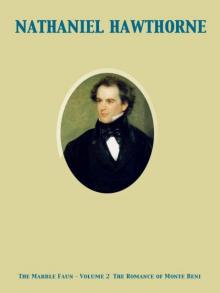 The Marble Faun; Or, The Romance of Monte Beni - Volume 1
The Marble Faun; Or, The Romance of Monte Beni - Volume 1 The Minister's Black Veil
The Minister's Black Veil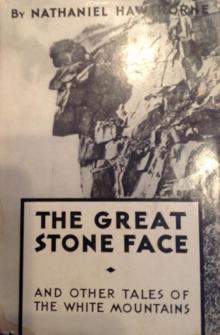 The Great Stone Face, and Other Tales of the White Mountains
The Great Stone Face, and Other Tales of the White Mountains The House of the Seven Gables
The House of the Seven Gables The Snow Image
The Snow Image The Blithedale Romance
The Blithedale Romance Rappaccini's Daughter: By Nathaniel Hawthorne - Illustrated
Rappaccini's Daughter: By Nathaniel Hawthorne - Illustrated Twice-Told Tales
Twice-Told Tales Twice Told Tales
Twice Told Tales The Marble Faun; Or, The Romance of Monte Beni - Volume 2
The Marble Faun; Or, The Romance of Monte Beni - Volume 2_preview.jpg) Footprints on the Sea-Shore (From Twice Told Tales)
Footprints on the Sea-Shore (From Twice Told Tales) Main Street
Main Street_preview.jpg) The Seven Vagabonds (From Twice Told Tales)
The Seven Vagabonds (From Twice Told Tales) Fanshawe
Fanshawe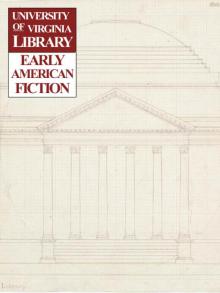 Chippings with a Chisel
Chippings with a Chisel Selected Tales and Sketches
Selected Tales and Sketches Young Goodman Brown
Young Goodman Brown Roger Malvin's Burial
Roger Malvin's Burial The Prophetic Pictures
The Prophetic Pictures The Village Uncle
The Village Uncle Scarlet Letter (Barnes & Noble Classics Series)
Scarlet Letter (Barnes & Noble Classics Series) The Procession of Life
The Procession of Life Drowne's Wooden Image
Drowne's Wooden Image Hawthorne's Short Stories
Hawthorne's Short Stories My Kinsman, Major Molineux
My Kinsman, Major Molineux Legends of the Province House
Legends of the Province House Foot-Prints on the Sea-Shore
Foot-Prints on the Sea-Shore The Haunted Quack
The Haunted Quack Tanglewood Tales
Tanglewood Tales The Seven Vagabonds
The Seven Vagabonds Mosses from an Old Manse, Volume 2
Mosses from an Old Manse, Volume 2 The Canterbury Pilgrims
The Canterbury Pilgrims Wakefield
Wakefield The Gray Champion
The Gray Champion The White Old Maid
The White Old Maid The Snow-Image: A Childish Miracle
The Snow-Image: A Childish Miracle The Gentle Boy
The Gentle Boy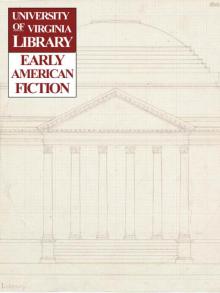 Mr. Higginbotham's Catastrophe
Mr. Higginbotham's Catastrophe![The Threefold Destiny: A Fairy Legend, by Ashley Allen Royce [pseud.] Read online](http://i1.bookreadfree.com/i2/04/10/the_threefold_destiny_a_fairy_legend_by_ashley_allen_royce_pseud__preview.jpg) The Threefold Destiny: A Fairy Legend, by Ashley Allen Royce [pseud.]
The Threefold Destiny: A Fairy Legend, by Ashley Allen Royce [pseud.] Lady Eleanore`s Mantle
Lady Eleanore`s Mantle The Great Carbuncle
The Great Carbuncle The Portable Hawthorne (Penguin Classics)
The Portable Hawthorne (Penguin Classics)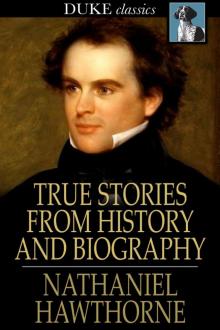 True Stories from History and Biography
True Stories from History and Biography